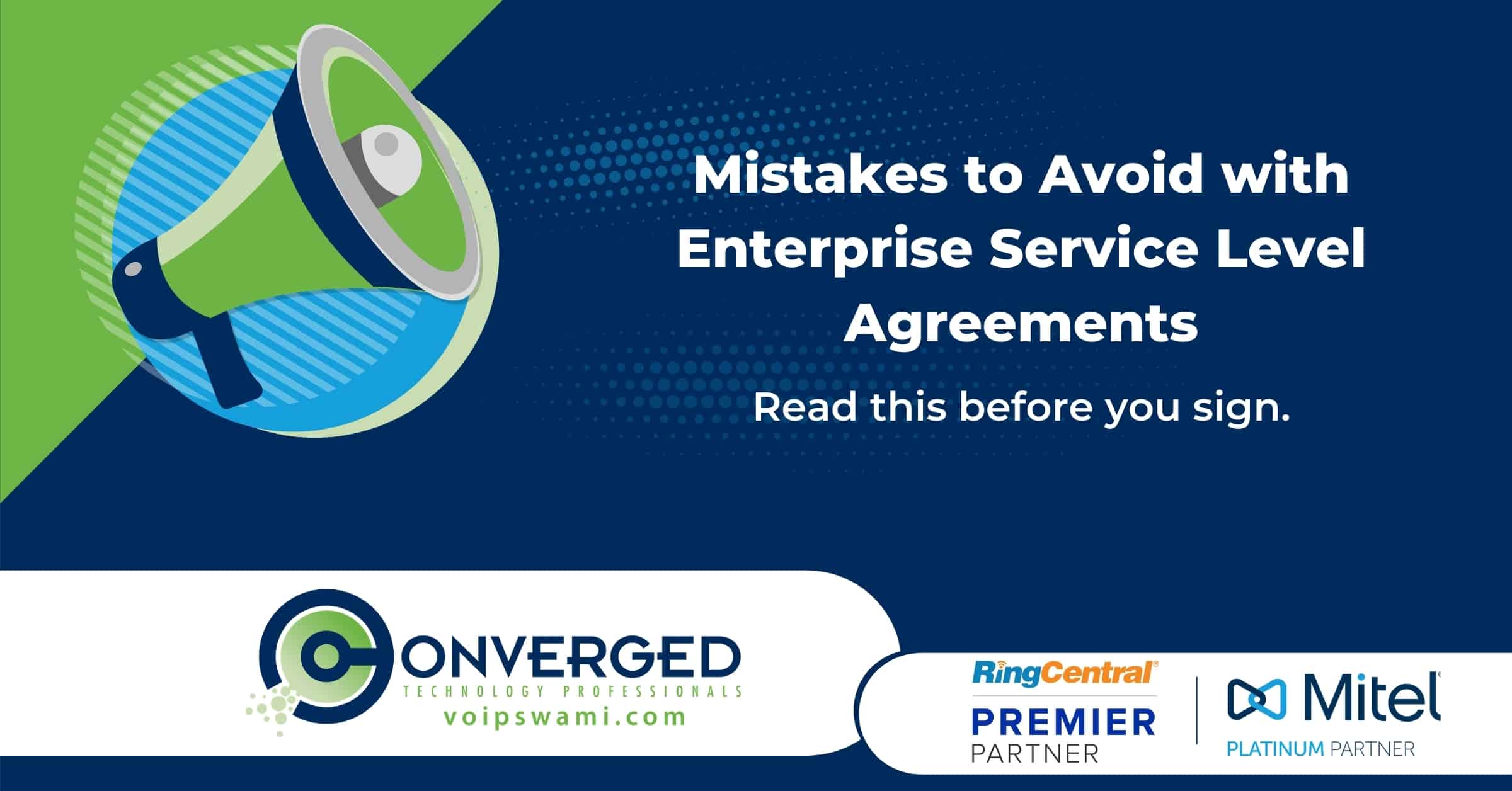
Service-level agreements (SLAs) have always been a fundamental part of partnerships with third party technologies. But as digital transformation encompasses even greater parts of the business, the stakes around SLAs management are higher than ever.
Service level agreements have increased in scope to be much more business inclusive. Rather than simply a means of reducing costs through performance credits, they are becoming a way to drive operational results and provide insights to the business not just within IT.
Understanding how to negotiate terms, how to structure the agreement and how to measure metrics are now critical for business outcomes. Careful SLA management is a great way to safeguard continued value added by new technologies, regardless of what curveballs the business encounters in the future.
Due to this greater magnitude of impact, SLAs are becoming a contentious challenge for IT teams since they are typically not legal experts. Perusing such litigious documents is a chore. However, legal and procurement teams read such documents with an eye for mitigating business and financial risks. Often, their inclinations are counter to IT interests as they are not focused on issues such as outage risks and vulnerabilities from an IT perspective.
Despite the increased emphasis on SLA management, Converged Technology Professionals continues to see common SLA errors that can be very damaging both to IT and the business as a whole. Here is a list of the most typical and costly mistakes we come across:
Failure to Establish & Agree on SLA Criteria Early On
When investigating a new technology, both sides are often eager to discuss the features, costs and benefits of the service. However, the SLA is not prioritized and each party assume that the expectations are clear to the other side. Frequently, this assumption is baseless and it throws a wrench in the process at a later stage, wasting time and risking the resources already invested in the RFP process.
Instead, make sure to focus on the agreement terms of the SLA early on. Detailing an agreement early fosters a shared understanding of service delivery, service quality and costs. This will better ensure that expectations on both sides are properly aligned and met throughout the entire investigating and implementation.
Too Many SLAs
Some IT leaders zealously pursue getting as many SLAs as possible to reduce service costs. While this might seem like a quick win, it can make those service credits meaningless to the business. It diverts attention away from mission critical services to those of lesser priority. For example, imagine having 100 SLAs and the amount of monthly invoice at risk is 20%, a breach in an SLA will result in a service credit that is 1/100 of 20%.
Through getting so many SLAs, the importance of each one is diluted. The overwhelming number makes it difficult for the provider to know and focus on which ones are most important to the client.
Isolated or Siloed SLAs
SLAs that are too focused on a single piece of IT infrastructure are short sighted. More and more frequently, IT teams are tying SLAs to broader business outcomes where IT performance metrics are identified. Using these supporting metrics gives greater clarity on who is responsible for what outcome.
Service level agreements need to be more holistic in scope. Instead of looking at each agreement as a single transaction for a single service or tool within IT, move up a level and look at it from a portfolio perspective.
No Escape Clauses
Believe it or not, IT teams will often forget to include a way out for poor performance or missed expectations. Without a clear escape clause, an SLA might not be worth much in the end to a business. Make sure that the SLA has clear thresholds for an acceptable number of infractions in a given period before it is void.

Opaque SLA Documentation
IT teams can quickly run into trouble when they allow a third party provider to dictate how SLA adherence is calculated. Sometimes vendors will include in the contract that they are the sole provider of accurate performance tracking against SLAs. Keep an eye out for such a clause. Signing on to such a condition is a huge cause for concern as it might render an agreed upon SLA a moot point.
Obscure SLA Measurements
In a similar vein, IT teams can often create a performance metric which doesn’t have adequate data to confirm the intended target. By not having a way to accurately calculate the SLA, it often leads to a contract that’s not actionable. So take care to calculate and identify meaningful SLAs in-house. Doing so ensures your access to meaningful metrics and a way to objectively measure performance. When a client provides their own SLA metrics, they eliminate a dependency on the provider as a single source of truth.
Treating Service Level Agreements as a Single Instance
Matching business outcomes to SLAs is a process, not a one-time deal. Over time, IT teams should develop a core competency of managing dynamic SLAs in order to properly understand budget spend and how it connects to value added to the business.
Forgetting Security Concerns
It is never fun to think of worst case scenarios. But for the sake of protection against disaster, it is important to check provider terms on recovery, encryption, incident response and vulnerability assessments. Make sure that the provider clearly addresses these concerns in the SLA and provides a course of action in the event of a data breach or similar incident.
Using Service Level Agreements to Resolve Conflicts
When an inevitable conflict arises between a client and a provider, using the SLA as the first method of arbitration can be quite costly and damaging to the relationship. Dependence on contractual agreements for conflict resolution can lead to a narrow view bent on culpability and punishment instead of focusing on what really matters- an agreeable solution. As the old adage goes, “you’ll catch more flies with honey than vinegar.”
Prioritizing Penalties Over Stability
Some IT leaders can unintentionally take an inverted view of SLAs- they see it as a source of revenue instead of a way to drive business performance. This perspective as a foundation is sure to lead to conflict with the vendor. When analyzing an SLA, the focus shouldn’t be solely on recouping losses after an outage. That damage is done. Is it far more important that the SLA proactively address high levels of ongoing service up front so that it prevents outages in the first place.
Failure to Take Responsibility
There are two sides to any agreement and this means your IT team also has a role to play in service delivery. IT teams err when they consider it the sole responsibility of the provider to perform as expected; there is often accountability in-house as well to keep SLAs valid. It is essential to understand these requirements to maximize the value of your agreements.
Accepting Static SLAs
As mentioned above, static SLAs are a common mistake. Service-level agreements need to be elastic and able to change as business needs and technologies change. One example of why this flexibility is important happened early during the pandemic. IT teams relaxed SLA terms as companies shifted to fully remote setups and vendors struggled to meet demand. Now that conditions are more stable, both sides should be able to review the terms and adjust them appropriately.
Converged Technology Partners helps IT teams like yours achieve better terms within SLAs. Our attorneys review all contracts and service level agreements to look out for your best interests and identify language that may work against you in the event of a disruption. Our team also has decades of experience in dealing with service level agreements to help you make the best possible decisions on what really matters.
For more information about SLAs and how to manage them, call us at 877-328-7767 or message us here.
If you enjoyed this article you may also enjoy:
